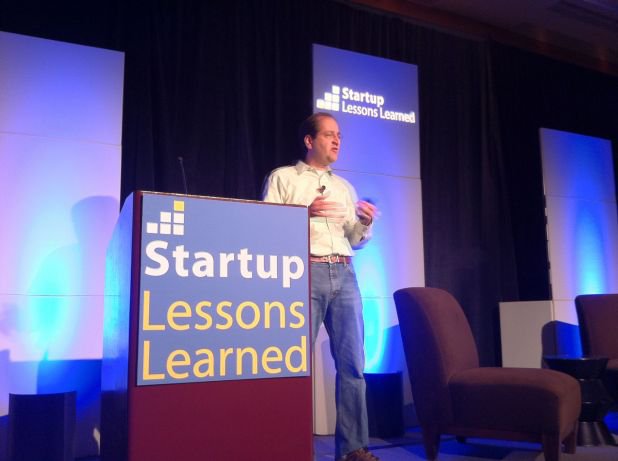At SLLConf this year, we decided to try an experiment of live blogging via typewith.me. The event is being simulcast to a global audience, just like last year. This is the first of a series.
Eric Ries kicked it off with an update on the Lean Startup “movement.”
Eric Ries says he’s just a figurehead, later Eric Ries referred to himself a “professional talking head”. He isn’t lean startup, we are.
We are experiencing a worldwide entrepreneurial renaissance.
Everyone turn your cell phones on! Being off the internet is irresponsible and direspectful to our ancestors who created this technology for us.
Lean Startup is global — it is no longer a Silicon Valley phenomenon. Check out Lean Startup Meetups.
We are in the process of democratizing entrepreneurship.
But, it has also been institutionalized…
- Harvard Business School- MVP Product Fund
- Stanford University- Lean Launchpad
- BYU- Lean Startup Research Project
Books
- the Entrepreneur’s Guide to Customer Development
- Steve Blank’s Four Steps to the Epiphany
- (and there was another one that we missed)
Entrepreneurship is not just two guys in a garage, it is a discipline
GhostBusters is one of the great entrepreneurship movies of all time
All great entrepreneurs have great stories. The movies play out like this:
Act 1) Characters& timing
Act 2) Boring stuff — the “photo montage” of people at the keyboard drinking beer
Act 3) How to divide up the spoils
This conference is about Act 2 — how does it really happen.
“A startup is a human institution designed to deliver a new product or service under conditions of extreme uncertainty.” — Eric’s definition
startup = experiment
“our future GDP growth depends on the quality and caliber of our collective imagination”
We are building companies that have fundamentally no customers and are pulled off the shelves
Frederick Winslow Taylor (March 20, 1856 – March 21, 1915) was an American mechanical engineer who sought to improve industrial efficiency.
Scientific Management:
* Study work to find the best way
* Management by exception
* Standardize work into tasks
* Compensate workers based on performance
What are we doing now that will later be revealed as myth and prejudice?
The Pivot
“better to be misunderstood than ignored”
Runway- number of pivots you still have the opportunity to make
Speed Wins
Validated learning reduces the time between pivots
Acheiving Failures = successfully exeuting on a bad plan
Why is it important to do things efficiently if we’re doing the wrong thing?
W. Edwards Deming and Taiichi Ohno- start of the Lean Revolution
Who is the customer? whose eyes matter in determining value vs. waste?
Minimize the total time through the loop
Ideas -> Build -> Code -> Measure -> Data -> Learn
see image here: http://lean.st/principles/build-measure-learn
Ship it anyways and see what happens? Why spend time agruing about the details if there the chance that no one will want it.
How do we figure out what we need to learn as quickly as possible
The Toyota Way
Foundation is long term thinking -> culture that supports people to do their best work
He displayed this pyramid:
- People
- Culture
- Process
- Acountability
“We have begun to learn how to keep innovators accountable”
Use learning milestones instead of product milestones
What are the inputs to our business plan right now
better have bad news that is true than good news that we made up
“If the 10% customer adoption does not happen, everything in this business plan is irrelevant” should be a big red banner!” via @timolehes
Tune the engine -> every business has different math
Pivot or persevere? when experiments reach diminishing returns, it’s time to pivot.
“If we alllow ourselves to fail, we can train our judgement to get better over time”


 Presented by Drew Houston, CEO and Founder of
Presented by Drew Houston, CEO and Founder of